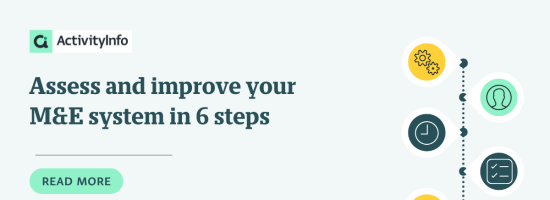
Assess and improve your M&E system in 6 steps
Six key steps to help you conduct an M&E system assessment and then act upon your key findings.
Read articles on M&E. Explore guides, use cases, best practices templates and tips.

Six key steps to help you conduct an M&E system assessment and then act upon your key findings.
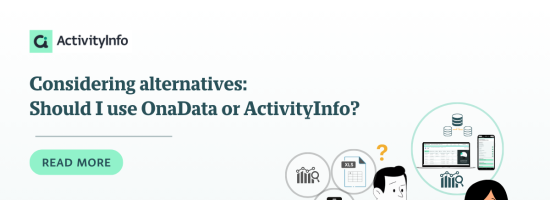
In which case is each tool a better fit?
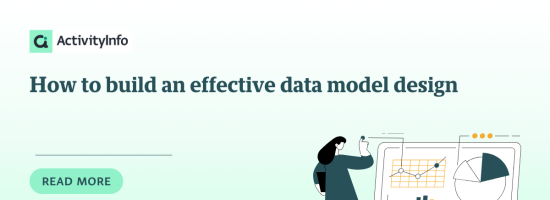
This article looks into the process of designing a data model, drawing an analogy to creating a blueprint for a house to help understand the steps involved in data modelling.
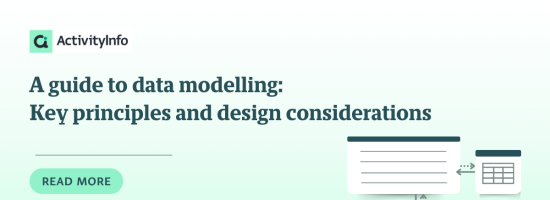
In this article, we look at the introduction to data modelling, key considerations for data model design, and the fundamental principles and frameworks.

Everything you need to know to start using ActivityInfo in your USAID programs and proposals.
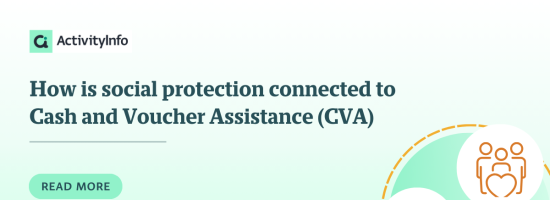
This article discusses strategies, benefits, and key factors for effectively integrating CVA with social protection programs.
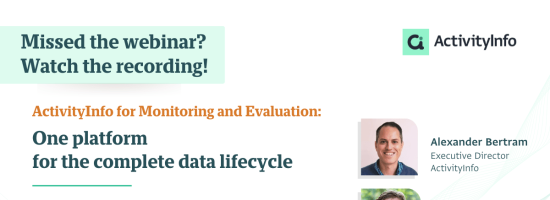
ActivityInfo demonstration for colleagues interested in adopting ActivityInfo for their M&E activities.
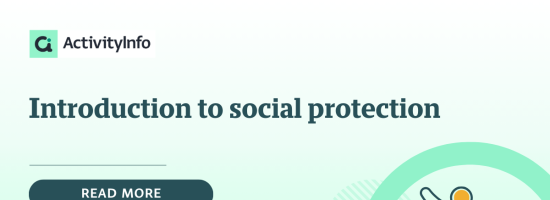
The article highlights the importance of social protection, detailing its types and emphasizes the need for mature systems to effectively respond to crises and coordinate with humanitarian efforts.
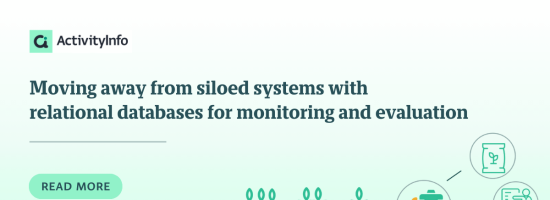
How can a relational database help you tackle fragmented information systems?
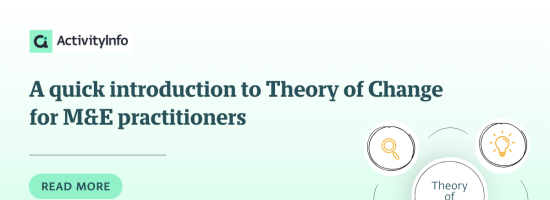
Wondering what Theory of Change is? Read this quick introduction.
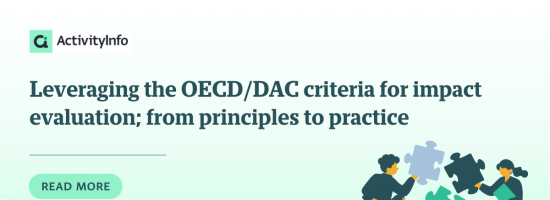
In this article, we look at the OECD/DAC criteria for impact evaluation, highlighting some principles and put it into practice.

In this article, we look at the role of the OECD/DAC criteria in impact evaluation and highlight the challenges.
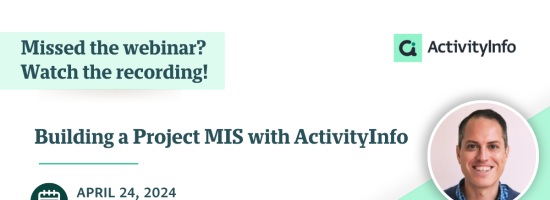
Webinar Series for colleagues interested in adopting ActivityInfo for their M&E activities.
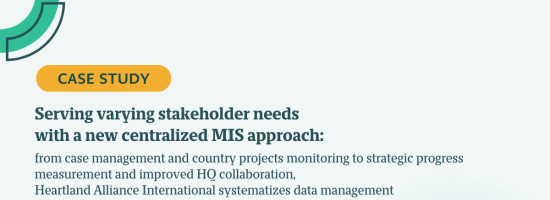
From case management and country projects monitoring to strategic progress measurement and improved HQ collaboration, Heartland Alliance International systematizes data management to improve data quality and timeliness through a data management process
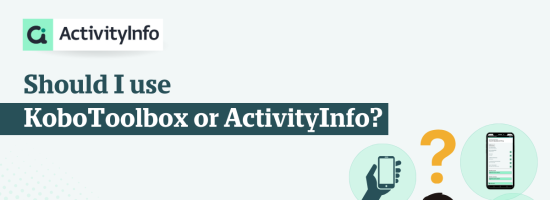
We created a guide to help you understand in which case each tool is a better fit and select the best alternative.

In this article, we discuss elections monitoring and observation and the importance of an information system.
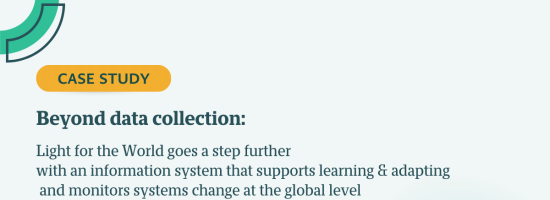
Explore how Light for the World approaches learning and adapting, monitoring systems change at the global level and more with ActivityInfo.
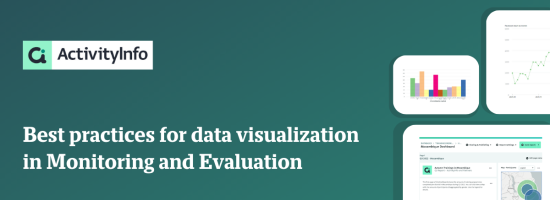
In this article, we present different aspects and practices for effective data visualization in Monitoring and Evaluation.
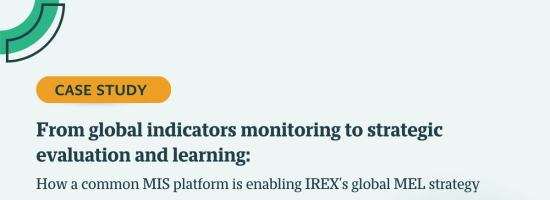
Program-specific indicator data for cross-program learning and meeting global MEL needs with ActivityInfo as a common MIS platform.
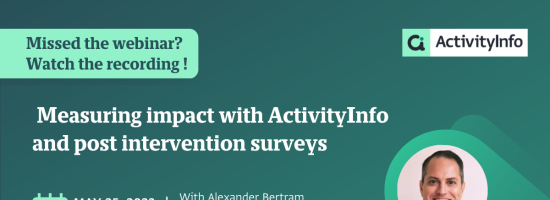
Use ActivityInfo for post intervention surveys
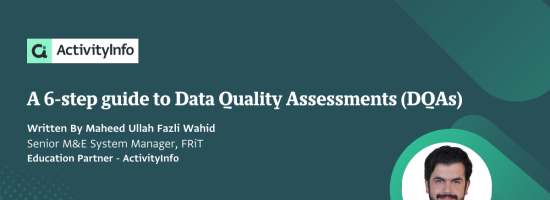
A guide to DQA, a systematic process to assess the strengths and weaknesses of a data set, and to inform users of the ‘health’ of data.
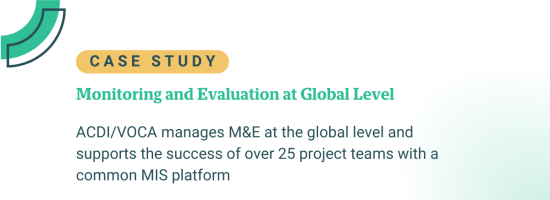
To align the work of a large number of diverse projects which are spread out globally, the M&E team maintains information management systems that go beyond a ‘simple database’.
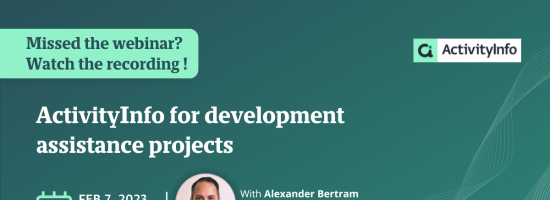
Webinar Series for colleagues interested in adopting ActivityInfo for their M&E activities.
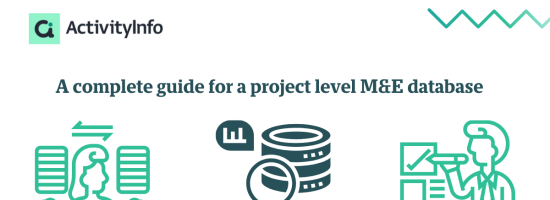
In this guide, we take a look at the concept of a project-level database to simplify your monitoring and evaluation efforts.
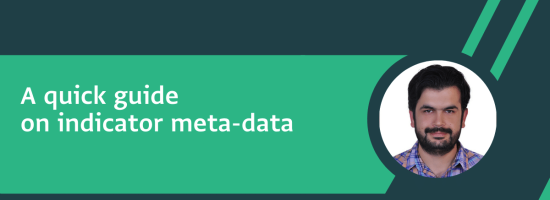
Why is indicator meta-data important and which critical elements should be included in the Indicator Reference Sheet?

During the gLOCAL Evaluation Week 2022, M&E experts shared their insights on navigating change management while introducing new digital technologies into their organizations.

During the gLOCAL Evaluation Week 2022, M&E experts shared their insights on challenges and opportunities they came across during the digital transformation journey in their organization.
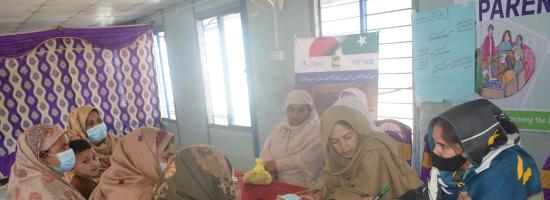
By replacing paper-based data collection with ActivityInfo Mobile Data Collection, KnK in Pakistan has witnessed remarkable improvements in both the process and the outputs of data collection within only 3 months of use.
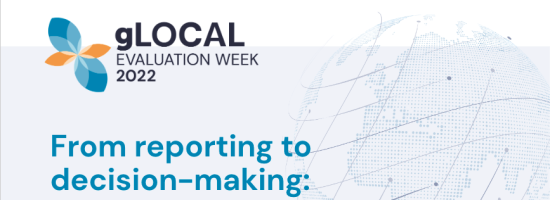
Watch the recording from our panel discussion during the gLOCAL Evaluation Week 2022.

4 tips to ensure effective partner capacity development for working with M&E systems of large-scale programs.
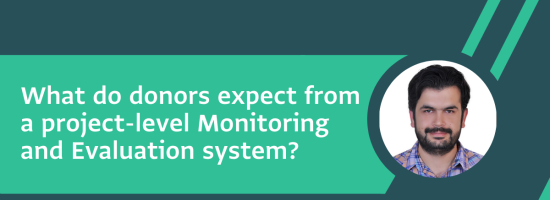
Explore the key components of a successful Monitoring and Evaluation system and how these enhance data quality for programme level indicators.

When it comes to choosing an Information Management system for humanitarian operation, off-the-shelf software such as ActivityInfo has proven to be lower-risk and more sustainable solution, in comparison to custom development software and open-source tools.

In this article, we are looking at examples of participatory methods and tools for M&E and what we should keep in mind when choosing them. We also consider how participatory M&E can be adapted to virtual settings and link to a variety of resources and toolkits.

In this article, independent M&E consultant, Susanne Neymeyer shares 7 key steps for the development of an M&E system and offers a tool to simplify conducting an M&E gap analysis.
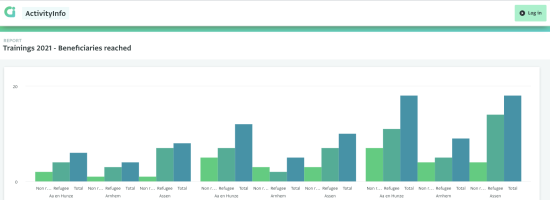
In this guide, we will create a simple database to measure the number of beneficiaries we reached with our income generation training activities. We will disaggregate this number based on gender (male, female, other) and refugee status (refugee, non refugee).
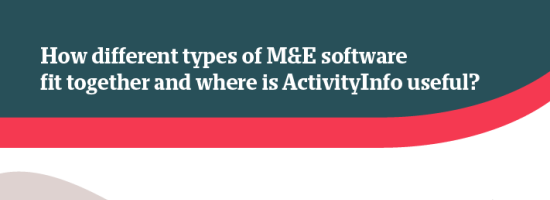
Find out how ActivityInfo can support your monitoring and evaluation activities and get introduced to our database templates.
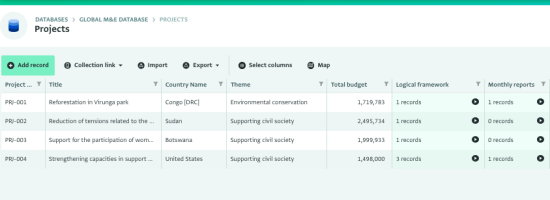
Track indicators across tens or hundreds of projects globally in one database.

The M&E team in the AVSI Foundation in Uganda is responsible for tracking key indicators for multiple projects, from project outputs all the way up to the strategic goals of the country programmes and is using ActivityInfo to centralize reporting and measure progress towards them.

In this guide, we take a look at how you can create a form to host an indexable inventory for your qualitative content in ActivityInfo. You can create a database, a folder or a form to collect and store various qualitative data such as user stories, transcripts, images, recordings, case studies or any other resource that has to do with your research and activities. You can also design your form in such a way that all your content is indexed and easily found based on the criteria you select.
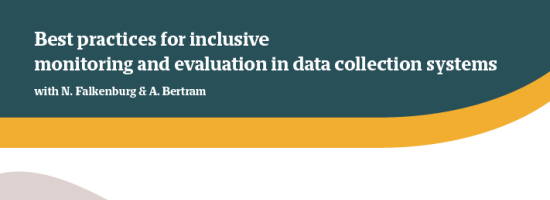
In this Webinar we discuss inclusive indicators, data disaggragation, information systems for inclusive programming and many more topics related to inclusion in monitoring and evaluation activities.

In this article, we are looking at participatory M&E more closely. We will see how it challenges us to think differently about power, knowledge, and the role of practitioners and affected populations in M&E. We will also consider when we might use participatory approaches in the M&E cycle. We will explore participatory M&E in terms of its benefits and its relationship to human rights, and look at some of the challenges we might face in using participatory approaches.
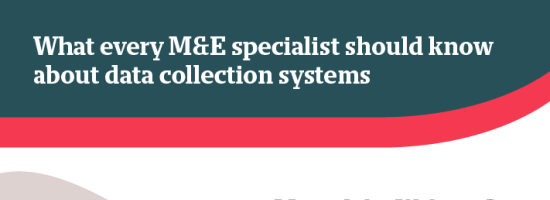
This session is ideal for Monitoring and Evaluation professionals who want to start building a data collection system for their M&E activities but don’t know how and where to start.
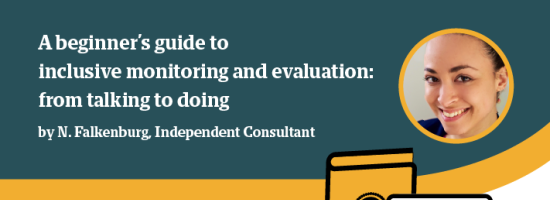
In this guide, Ms Naomi Falkenburg addresses the concept of inclusive monitoring and evaluation and discusses the main characteristics of an inclusive M&E system. The guide also discusses how ActivityInfo can facilitate inclusive practices in data collection and information management.
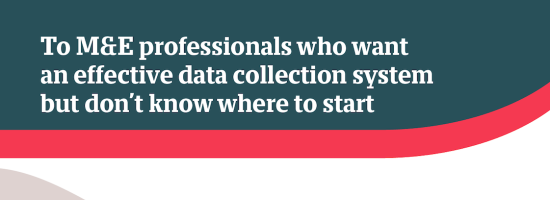
In the past, we discussed how ActivityInfo can be used for Monitoring and Evaluation and we took a look at how various features in the system can make the work of the M&E officer easier. In this article, we dive into a more advanced and detailed approach to help you transform your M&E plan into an effective data collection system.

Despite being a powerful tool when analyzing data, spreadsheets have not been built to hold large amounts of data. That is why a more robust system designed for this purpose can benefit an organization working on complex data requirements. With this article we take a look at how ActivityInfo can help you tackle information management challenges and spreadsheet nightmare scenarios in 2023.

Following the translation of ActivityInfo in Burmese (Myanmar language), we spoke with Ms Swe Swe Aye, a certified ActivityInfo Partner, who led the translation project and we discussed the importance of translating tools to a local language and how user-friendly localized platforms, such as ActivityInfo, can help NGOs in Myanmar and around the world improve their monitoring and evaluation processes.
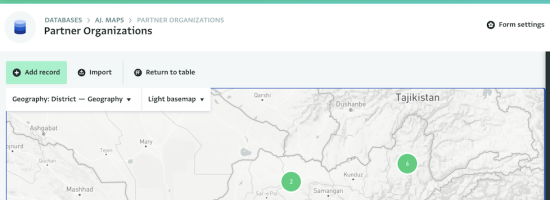
Following our latest release you can now display on maps records that have been added to a form or subform and are linked to a geographic point or area

The use of ActivityInfo for Disaster Risk Management by AKAH,A and for the COVID-19 country response in partnership with the Ministry of Public Health.

Having a monitoring and evaluation software in place is becoming an important component, if not a prerequisite, for the success of a project or a programme. The work of a monitoring and evaluation officer is simplified when an online system is used to centralize and standardize indicators and data colllection processes. In ActivityInfo, we provide database templates that can be adapted to your needs quickly and easily whether you plan to monitor programmes within your organization or you intend to cooperate with other partner organizations.
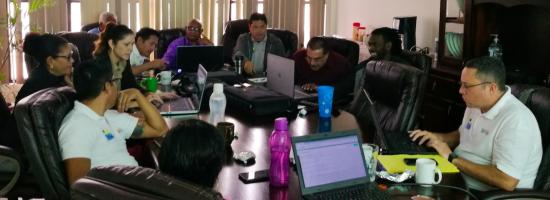
This November, our Training Coordinator, Lucy Brinks, visited the offices of the Belize Social Investment Fund (BSIF) in Belmopan City for a five day, customized training on ActivityInfo.The team of BSIF will be using ActivityInfo for Monitoring and Evaluation in various development projects and subprojects.
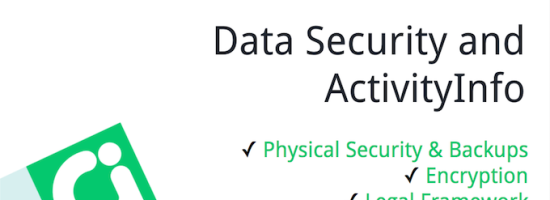
The security of the information gathered and stored in ActivityInfo is of paramount importance for us. Having worked in the field we know what it is like to handle confidential and sensitive information and we take up the cause of protecting what the humanitarian organizations trust us with. This blog post is about the precautions and actions we take to ensure that your data is always safe in ActivityInfo.
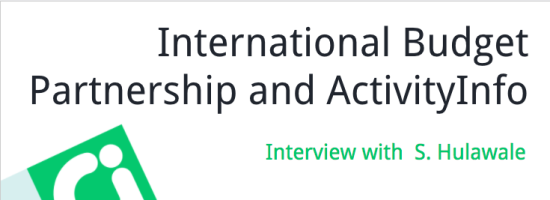
In this blog post you can watch an interview with Suvarna Hulawale, Monitoring and Evaluation Officer in the International Budget Partnership (IBP) who presents how the organization has been using ActivityInfo for their programs and the country programs. The interview was conducted for and presented in the ActivityInfo User Conference 2018, in Amman, Jordan.
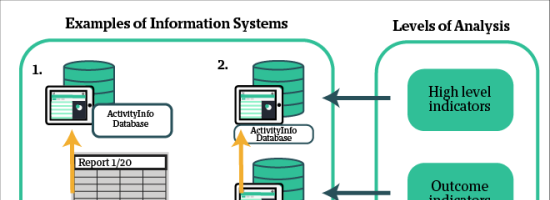
In this blog post we take the next step towards understanding how a successful Information System should work, by asking key questions, taking inspiration from our current users.
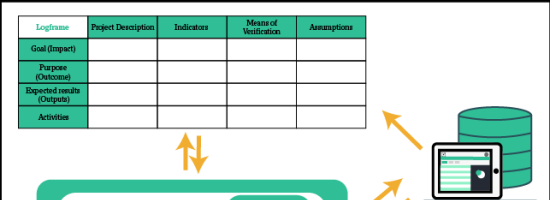
In this blog post we examine what a Logical Framework (LogFrame) is, what an Information System is and what is the role of ActivityInfo in relation to these two.

Compiling internal training materials for your staff or external partners can give stakeholders the confidence to fully participate in a new system. In this blog post, we have collected a number of great examples on training materials from ActivityInfo users, together with a few tips and tricks from our own team.

The potential for offline data collection and creating databases that can be comparable to each other as well as the fact that no technical consultant was needed to get started or to apply changes to the databases were some of the most important factors that led IBP to choose ActivityInfo as a Monitoring and Evaluation software.

The team of ActivityInfo works to facilitate the work of hundreds of organizations working with monitoring and evaluation, information management and data collection. Here is a list of ways ActivityInfo can improve the way you work with the data you collect within your organization.
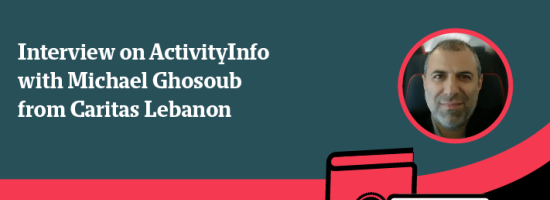
An interview with Michael Ghosoub about how Caritas uses ActivityInfo in Lebanon.
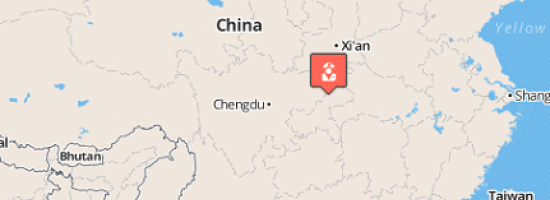
Blog post by Danielle Moore regarding how AIP Foundation decided to adopt ActivityInfo across Vietnam, Thailand, China and Cambodia